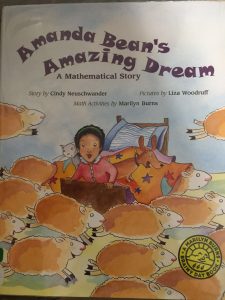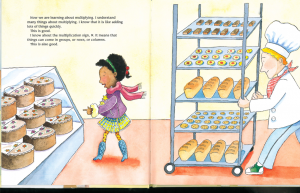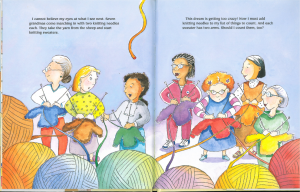
Author: Cindy Neuschwander/ Marilyn Burns
Illustrator: Liza Woodruff
Publishing Information: Marilyn Burns Education Associates, 1998
Number of Pages: 30
Genre: Picture book


Analysis:
Amanda Bean is a little girl who loves counting. Her teacher tries to convince her to learn multiplication but Amanda refuses until she has an amazing dream about counting a huge number of things. She realizes that multiplication is very helpful.
This book serves a purpose of giving children basic mathematical common sense about numbers and operations. It functions as a door for children to be interested in math by introducing Amanda Bean who “counts anything and everything” (P. 10).
I found the book problematic in the following two ways. Firstly, Amanda Bean seems to lose control of counting and I do not think it is a healthful habit. For example, “I am Amanda Bean and I count anything and everything” (P. 10) and “Now I must count the yarn, too!” (P. 21), such verses show a couple of times. It might mislead children to think that to love math is to count all the time. Psychologically, it is not proper to encourage children to “count anything and everything” (P. 10). Secondly, one of the ideologies the author conveys is that everything is quantifiable since Amanda Bean is able to “count anything and everything” (P. 10). However, in the real world, a lot of important things are not quantifiable such as love and friendship. It is also important for children to know that life is not all about counting.
Perceptually, the book use bright colors a lot which demonstrate Amanda Bean’s enthusiasm towards math. The images are not framed. Therefore, children can easily participate in the counting process. In her dream that she needs to count many things, the illustrations become chaotic and repetitive which means that the character is gradually losing control. Structurally, there is not any obvious separation between the text and images. Ideologically, this book promotes academic interest and conveys the idea that math is everywhere. Absorbing knowledge and being innovative can help people do better in academia. Besides, this book stresses individuality by mentioning the word “I” all the time. However, the book also points out that “I” is not necessarily correct all the time. “I” need help and accepting help could help “I” do things quicker and better.
